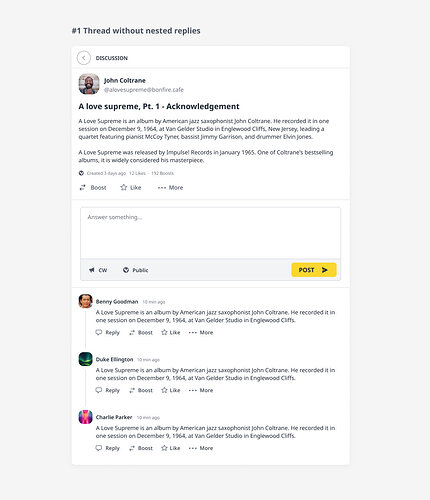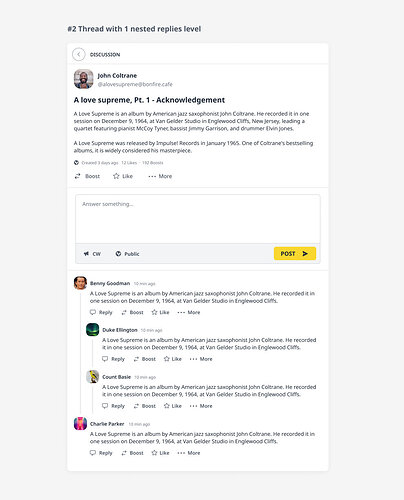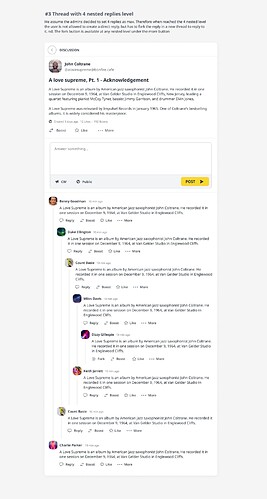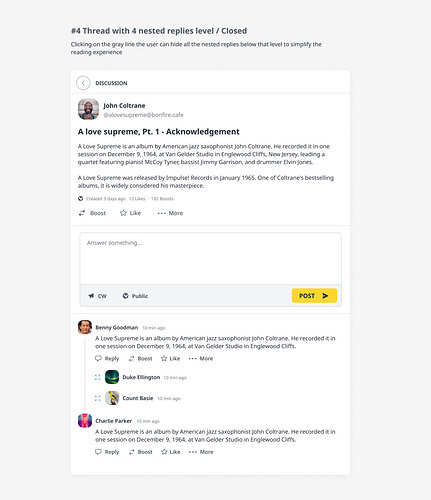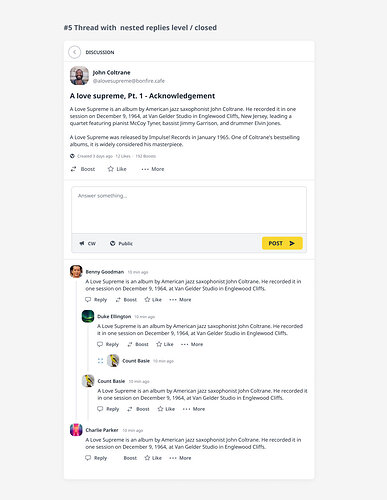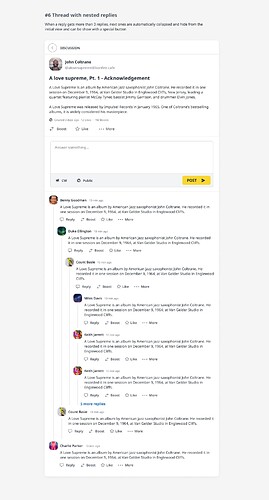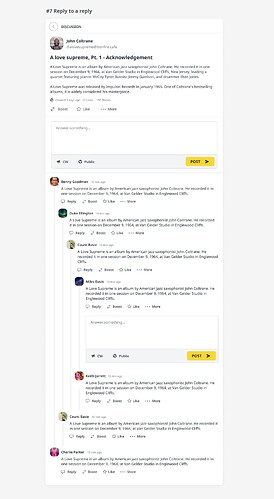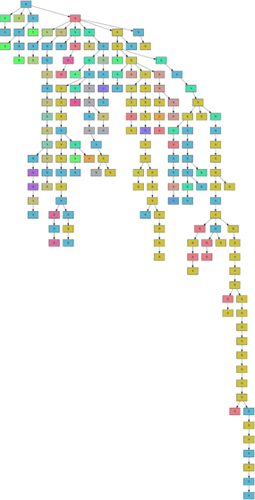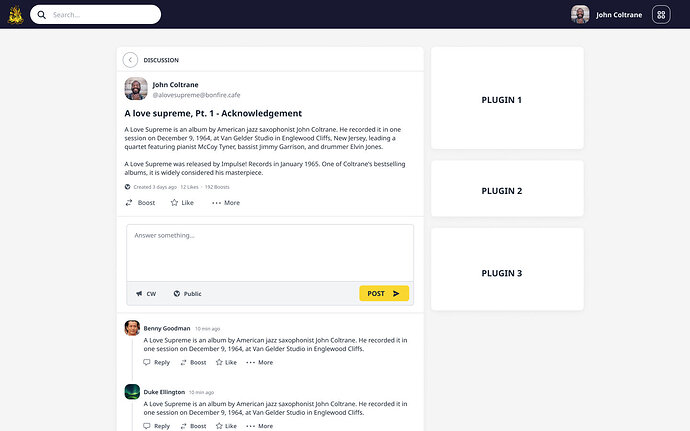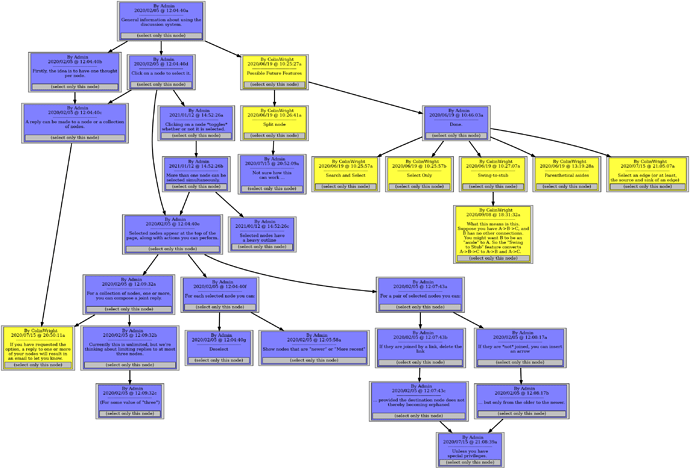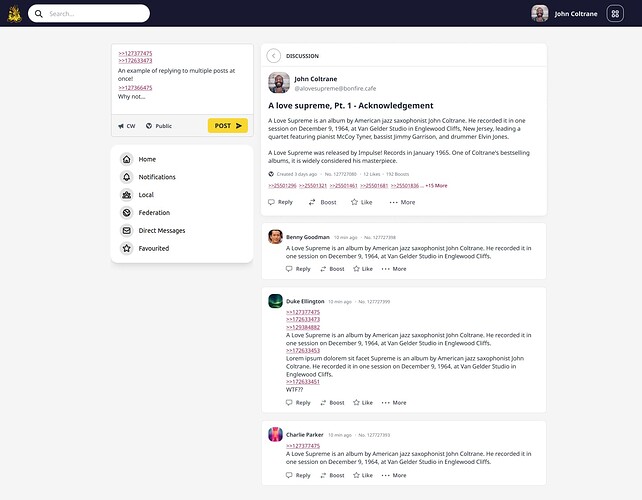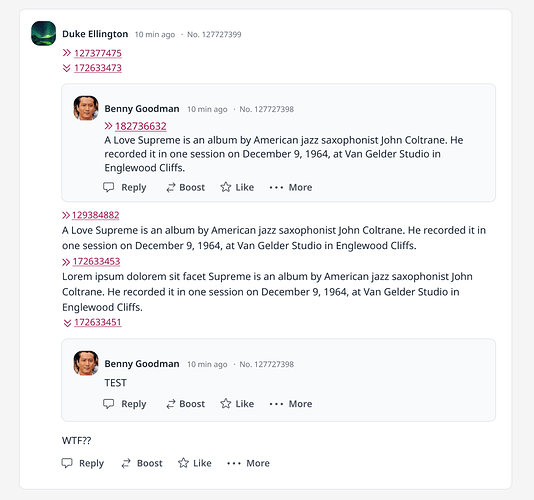I’d like to keep zooming out a bit more, and put more possibilities on the table to consider together.
Social networks are all about discussions, but often discussions goals are somehow driven by the social network agenda in a more or less conscious way.
Mainstream social networks infact, dictates the discussion UX and UI mostly to increase/force users engagement and more in general to reach their business targets - it does not have to be this way for community-driven social networks.
In my experience, most of the time a group talks about what is the best way to handle discussions over a platform, it ends up mostly about pushing each one personal preferences, that usually span between Flat vs Nested/Three design plus some meaningful enhancements.
Such preferences though are usually backed up by personal habits and how each of us like to read contents and engage in online conversations.
Things get particularly complicated with social network, because meanwhile forums and chats have a more or less consistent bias toward how a discussion should flow and be experienced, social networks have more implicit blurred bounds.
So, given it’s not that easy to pick one UX that satisfies the various range of topics and flows that can arise in social network discussions, why don’t we do the opposite, and imagine how user motivations can drive the discussion UX?
That’s not a totally new approach, facebook for example let the user decide the post layout depending on the activity type (but afaik not the discussion thread). Reddit instead let the users customize the replies order.
My idea is to do both.
Based upon the user motivation, the whole thread and the actions the audience is allowed to perform should change accordingly.
This implies 2 level of flexibility: The author can decide the default layout and which actions are available, the post audience can sort / reorganize the replies according to their own preferences.
Following an (incomplete) list of motivations to start a discussion on a social network:
- Ask a question
- Express an opinion
- Express a feeling
- Share a link
- Open a debate
- Share information
- Collect information
- Check the sentiment
- Make a joke
And here, a list of parameters that usually shape the most common discussion pages UX/UI
- Replies sorting: New | Old | Most voted | Most replies
- Layout: Flat | Three | Q&A
- Vote a reply: YES | NO
- Pick an answer: YES | NO
- Replies: Inline | Flat with a reference to the replied activity | Both
- Nested level: No (Flat) | 1 level | Customisable
- Reply to one or more posts (by tagging each post number) | Reply to someone ( by “@someone” )
Questions time:
- Based on how those parameters are combined together, can we create one or more UX/UI that fulfill each motivation?
- Would it be too confusing for users to interact with different discussions that have (slightly or not ) different UX/UI on the same platform?
- How many variations we would end up with?
- Is it somehow meaningful for others apart from me or I am just mumbling XD

